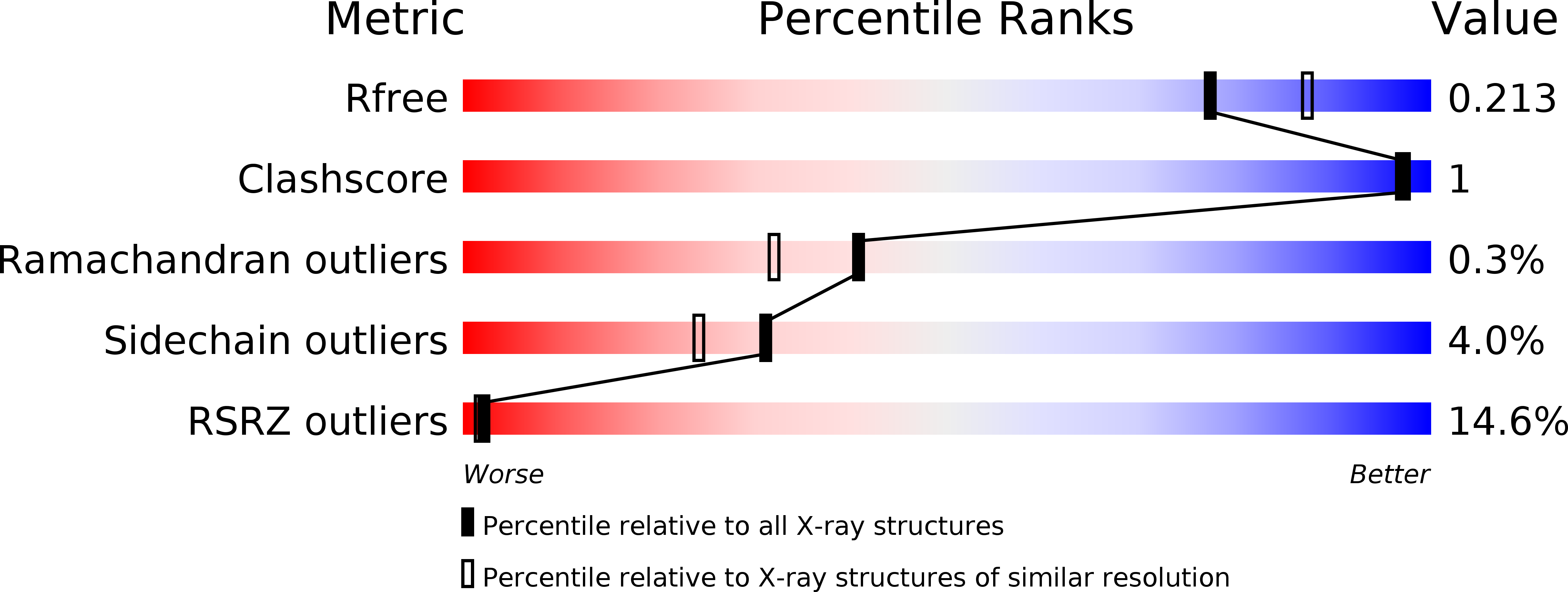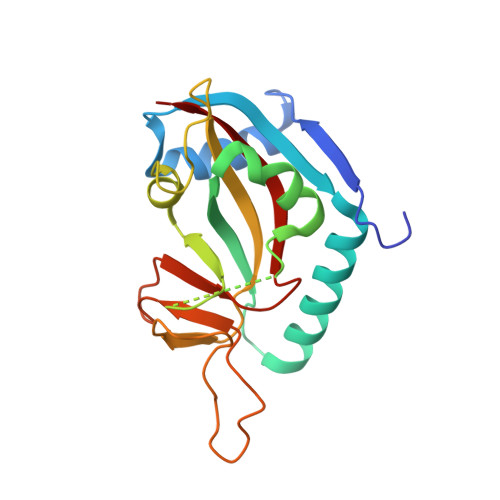Small Molecule Microarray Based Discovery of PARP14 Inhibitors.
Peng, B., Thorsell, A.G., Karlberg, T., Schuler, H., Yao, S.Q.(2017) Angew Chem Int Ed Engl 56: 248-253
- PubMed: 27918638
- DOI: https://doi.org/10.1002/anie.201609655
- Primary Citation of Related Structures:
5LXP, 5LYH - PubMed Abstract:
Poly(ADP-ribose) polymerases (PARPs) are key enzymes in a variety of cellular processes. Most small-molecule PARP inhibitors developed to date have been against PARP1, and suffer from poor selectivity. PARP14 has recently emerged as a potential therapeutic target, but its inhibitor development has trailed behind. Herein, we describe a small molecule microarray-based strategy for high-throughput synthesis, screening of >1000 potential bidentate inhibitors of PARPs, and the successful discovery of a potent PARP14 inhibitor H10 with >20-fold selectivity over PARP1. Co-crystallization of the PARP14/H10 complex indicated H10 bound to both the nicotinamide and the adenine subsites. Further structure-activity relationship studies identified important binding elements in the adenine subsite. In tumor cells, H10 was able to chemically knockdown endogenous PARP14 activities.
Organizational Affiliation:
Department of Chemistry, National University of Singapore, 3 Science Drive, Singapore, 117543, Singapore.















